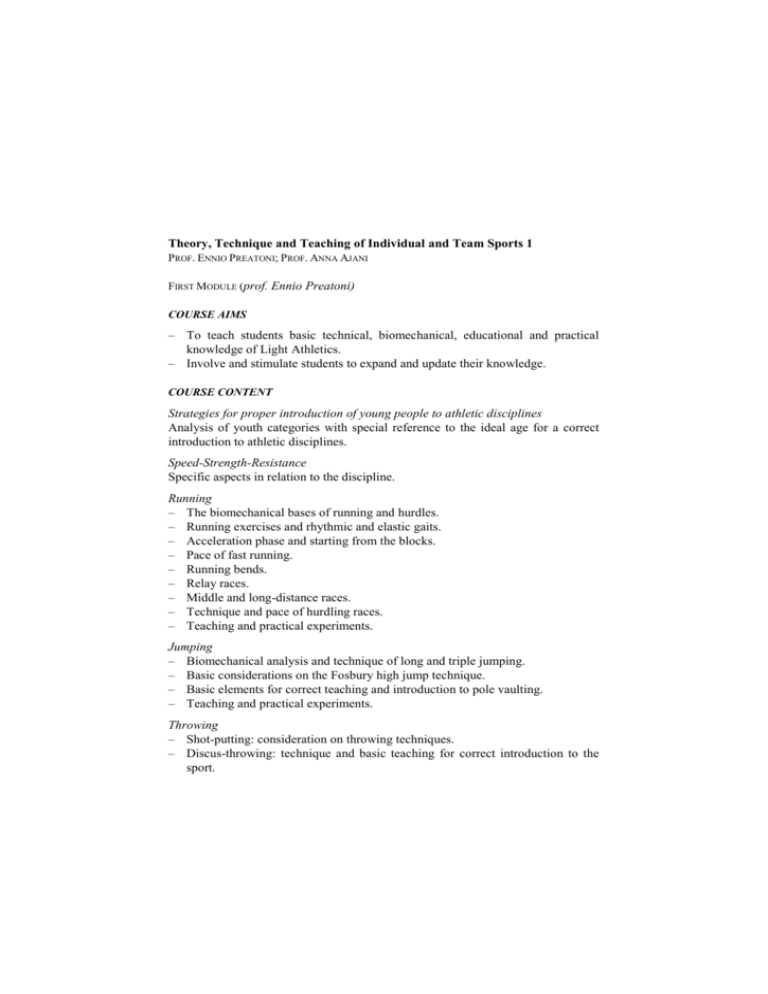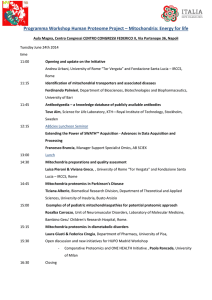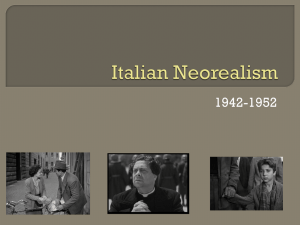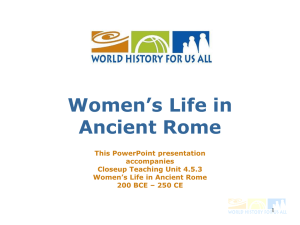Theory, Technique and Teaching of Individual and Team Sports 1
advertisement

Theory, Technique and Teaching of Individual and Team Sports 1 PROF. ENNIO PREATONI; PROF. ANNA AJANI FIRST MODULE (prof. Ennio Preatoni) COURSE AIMS – To teach students basic technical, biomechanical, educational and practical knowledge of Light Athletics. – Involve and stimulate students to expand and update their knowledge. COURSE CONTENT Strategies for proper introduction of young people to athletic disciplines Analysis of youth categories with special reference to the ideal age for a correct introduction to athletic disciplines. Speed-Strength-Resistance Specific aspects in relation to the discipline. Running – The biomechanical bases of running and hurdles. – Running exercises and rhythmic and elastic gaits. – Acceleration phase and starting from the blocks. – Pace of fast running. – Running bends. – Relay races. – Middle and long-distance races. – Technique and pace of hurdling races. – Teaching and practical experiments. Jumping – Biomechanical analysis and technique of long and triple jumping. – Basic considerations on the Fosbury high jump technique. – Basic elements for correct teaching and introduction to pole vaulting. – Teaching and practical experiments. Throwing – Shot-putting: consideration on throwing techniques. – Discus-throwing: technique and basic teaching for correct introduction to the sport. – Javelin throwing: run-up, special steps and final throw with relevant teaching and technical notes. – Teaching and practical experiments. READING LIST AA.VV., Il manuale dell’Istruttore di Atletica Leggera, Centro studi e ricerche FIDAL, Rome, 1999. AA.VV., Il manuale dell’Allenatore, Centro studi e ricerche FIDAL, Rome, 2002. C. VITTORI, L’allenamento del giovane corridore dai 9 ai 12 anni, Centro studi e ricerche FIDAL, Rome, 1997. A. DONATI-P. BELLOTTI, L’organizzazione dell’allenamento sportivo: nuove frontiere, Società Stampa Sportiva, Rome, 1992. C. BOSCO, La forza muscolare: aspetti fisiologici ed applicazioni pratiche, Società Stampa Sportiva, Rome, 1997. G. PAISSAN, In salti nelle categorie giovanili, Centro studi e ricerche FIDAL, Rome, 1998. G. PAISSAN, L’insegnamento dell’atletica leggera a scuola, Centro studi e ricerche FIDAL, Rome, 2002. TEACHING METHOD Basic theory lessons in the classroom for all students. Practical work on the athletics track and in the gym and relevant teaching experiments of the various disciplines included in the curriculum. ASSESSMENT METHOD Final assessment (at the end of the course): – written test: closed-answer questions on the basic theory part; – oral and practical test on the technical and teaching basics of the movements linked to the various disciplines dealt with during the course. The final assessment also covers regular and active participation in the practical work and teaching experiments. NOTES Professor Ennio Preatoni see students at the end of the theoretical and practical lessons or by appointment. SECOND MODULE (Prof. Anna Ajani) COURSE AIMS The course intends to provide with the theoretical and practical knowledge of the fundamental technical elements of Artistic Gymnastics. COURSE CONTENT – Organization of the central and peripheral bodies of Italian Gymnastic Federation. – Planning of the sports year. – Code of international points. – Axis and planes. – Phisical training of the gymnast. – Basic actions of Artistic Gymnastics. Floor – Forward and backward rolls. – Handstand. – Cartwheel. – Round off. – Forward and backward walkovers. – Handsprings forward and backward with or without hands. – Forward and backward saltos. – Artistic parts: jumps and leaps, turns, waves. Vault – Basic steps of jump vaults. – Horizontal vaults. – Vertical vaults. – Mini tramp. – Fundamental jumps. Parallel bars – Holds and grips. – Basic positions. – Swings. – Handstand. Balance beam – Forward and backward rolls. – Cartwheel. Uneven bars (low bar) – Holds and grips. – Basic positions. – Side passes of legs. – “A” mounts and dismounts. – Technique, didactis and assistance of the above mentioned items. READING LIST Notes of the course classes C. SCOTTON-M. COMOGLIO, Ginnastica: gioco-sport e specialità sportive, Libreria Cortina, Turin, 2003. C. SCOTTON-D. SENAREGA, Corso di Ginnastica Artistica, Libreria Cortina, Turin, 2003. TEACHING METHOD Theoretical lessons in classroom (15 hours). Practical lessons in the gym (30 hours). Lab (20 hours). ASSESSMENT METHOD The exam will be a written test where the student must show to be able to communicate correctly with the technical terms of the subjects. The students who will be successful with the written test will stand a practical test about fundamental technical elements, chosen by the students according to his/her ability. NOTES Further information can be found on the lecturer's webpage at http://docenti.unicatt.it/web/searchByName.do?language=ENG or on the Faculty notice board.





